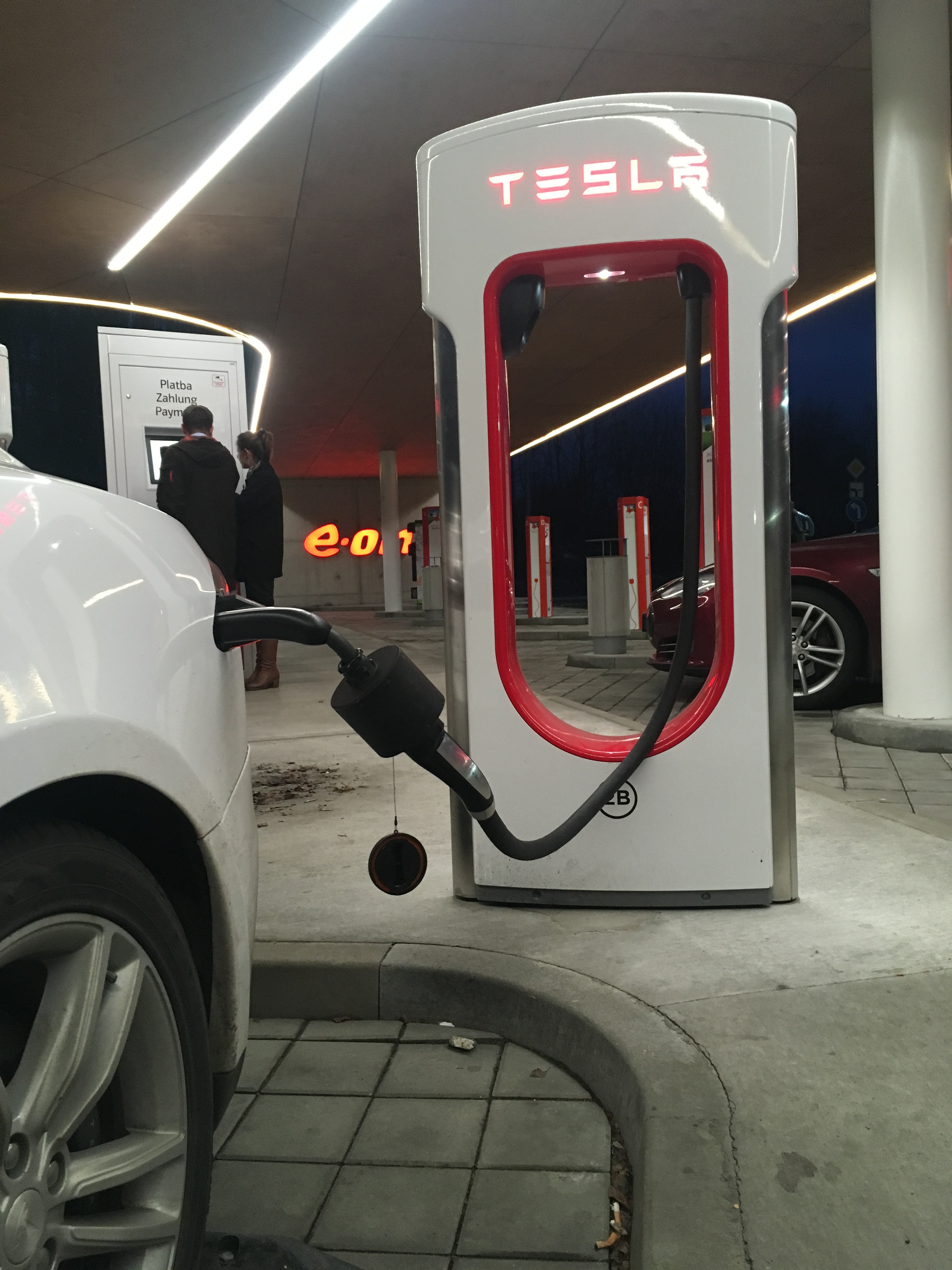Foxhound199
Member
So someone actually went and brought the gobstopper to Mr. Slugsworth...Finally there are quotes this may be a car bought by a German carmaker
You can install our site as a web app on your iOS device by utilizing the Add to Home Screen feature in Safari. Please see this thread for more details on this.
Note: This feature may not be available in some browsers.
So someone actually went and brought the gobstopper to Mr. Slugsworth...Finally there are quotes this may be a car bought by a German carmaker
That photo is clearly stylized. I'd avoid color decisions in that context.Looking at the reflexions I have seen lately I am almost sold on the blue
Instagram post by Peter Hatch • Nov 24, 2017 at 9:53pm UTC
Anyone know what's N/S stands for under Scheduled Delivery Date? Not Scheduled?
So someone actually went and brought the gobstopper to Mr. Slugsworth...
Electrek quotes a German Tesla forum member as saying that he saw this Model 3 at a Supercharger.
“He said that the Model 3 was being driven by American Tesla employees and that they had a special adapter in order to charge at European Superchargers with a standard Tesla American plug.” - A rare Tesla Model 3 spotted in Germany, reportedly with new charging adapter
Tesla cars are optimized for 0-60 mph drag car performance. Do not mix up best-in-class acceleration with continuous speed, there is also a difference between top speed and average speed.Can we borrow that adapter and ship our Model X to Germany next time we go visit? I so want to drive it on the autobahn where everybody goes 110mph on average...
Tesla cars are optimized for 0-60 mph drag car performance. Do not mix up best-in-class acceleration with continuous speed, there is also a difference between top speed and average speed.
Teslas on a German Autobahn are placed in the middle of the food chain between hunters (Porsche, Audi, BMW, Mercedes) and pickings (trucks, caravans).
My last fossil car was an Audi A6. Visiting family in Southern Germany was a continuous trip with average speed 140 km/h (86 mph), including country and inner-city roads. My feeling of safety and responsibility let me go 210 km/h (130 mph) max on certain three-lane sections of Autobahns without a limit and low occupancy. With my Model X P90D: The faster you drive, the more often you need to take a charging break. Beyond initial range, excessive max speed lengthens total time of travel. We are fine with loosing one hour time since driving zero-emssion, due to lower max speed and SuC stops. We have more McDonald's food and enjoy pleasant conversations with other Tesla owners (more to come with Model 3's arrival).
Expecting Model 3s on German Autobahn is a mixture of happiness and horror. The current car design is limited to handle speed and traffic conditions on a German Autobahn. TACC/AP is only active until 140 km/h, which is fair. Being in the middle of the speed range, a Model 3 needs to anticipate the demand of surrounding vehicles to adjust their driving paths. Slow trucks on the right lane, approaching family cars will need to change lane to keep their speed. They shall not change lane, if a fast car approaches from behind. If you are the fast car on the left lane, you may open a gap politly. Experienced drivers follow unwritten rules, how to mitigate colliding interests. The current AP software does not reflect anything like this, it is an autistic "Kevin of the roads" . Even if AP software improves, how will Model 3 handle this without a reliable backward sensor suite?
So I hope, the Tesla engineers take lots of notes and ideas during their stay here.
From comments in that Electrek articleCan we borrow that adapter and ship our Model X to Germany next time we go visit? I so want to drive it on the autobahn where everybody goes 110mph on average...
"It would be the first reported use of such a Menneke Type 2 to Tesla plug adapter."
No, it wouldn't be... Amateurs already doing it for a long time when importing US Teslas to Europe...



